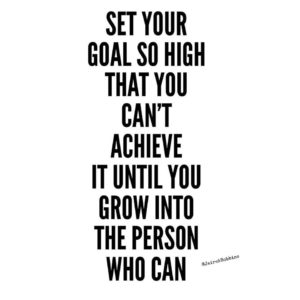In the book “The Inner Game of Tennis”, Timothy Gallwey highlights a great formula that can be applied to much more than tennis. In fact, it’s greatly related to performance coaching and how to help your clients achieve peak performance.
Gallwey says “The opponent within one’s own head is more daunting than the one on the other side of the net”. If you’ve read Jairek’s book “LIVE IT!” you probably recall the “3 opponents”, right? These concepts are very similiar. Both discuss the “internal opponent” – yourself.
For more visual people, here’s a great formula Gallwey shares:
Performance = potential – interference or P = p – i
According to Gallwey “The primary goal of coaching is to eliminate the internal obstacles to performance, learning, and enjoyment.”
We couldn’t agree more. So the simplest way to tap into peak performance within yourself or a client is to determine what is your truest or highest potential? Next, what is the interference that is getting in the way? What is interfering with that potential? Once we remove the interference – and even replace it with something that boosts our potential rather than reduces it – now we are increasing our performance and getting closer and closer to peak performance.
Now interference can mean many different things. It’s up to you as a coach to determine with your client what the interference is. Most often it’s emotional interference. Our emotions simply get in the way. Whether it’s fear, guilt or worry, these emotions simple detract from our potential.
Fear is hands down the most inhibiting emotion and tends to be most obvious. Our mind can play tricks on us to “keep us safe”, but it also leaves us unfulfilled. In Performance Coach University, we discuss a handful of tools that help overcome fear one of which is Byron Katie’s “The Work” questions. It’s a very powerful tool to overcome beliefs and fears that hold us back.
Guilt and Worry are also two very strong emotions which can hold us back tremendously. They get in the way of performance, they cause people to lose sleep, through off work/life balance and so forth.
These three emotions are crippling.
Here are the 4 steps to utilizing this simple yet powerful formula with your coaching clients:
1- As a performance coach, first we must determine where our clients are currently at. Benchmark, if you will.
2- Next determine where they want to go (their potential).
3- Then, we must define the emotions or interferences that are detracting from our potential and thus hindering our performance.
4- Once we’ve identified the interferences, the next step is to leverage the coaching tools you’ve learned as a performance coach to eliminate interferences once and for all so your client can tap into their highest potential and truly perform at peak levels. This may include a strategy or action plan that you revisit on each call to track their progress.
As new interferences arise, repeat the steps.
Great job coach!
To your success,
Jairek Robbins

